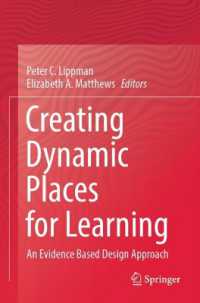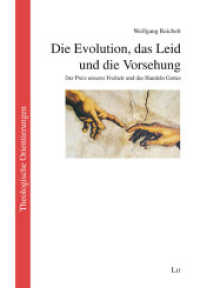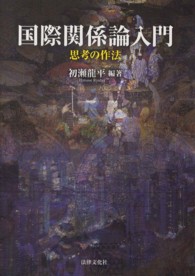- ホーム
- > 洋書
- > ドイツ書
- > Social Sciences, Jurisprudence & Economy
- > Education Science / Pedagogic
- > didactics, methodics, school education
Full Description
This book responds to the changes and needs of English Language Learning by offering insight into online writing pedagogical platforms and atmospheres. This volume provides an in-depth understanding of writing practices that are responsive to the challenges for teaching and learning writing in local and global contexts of education.








